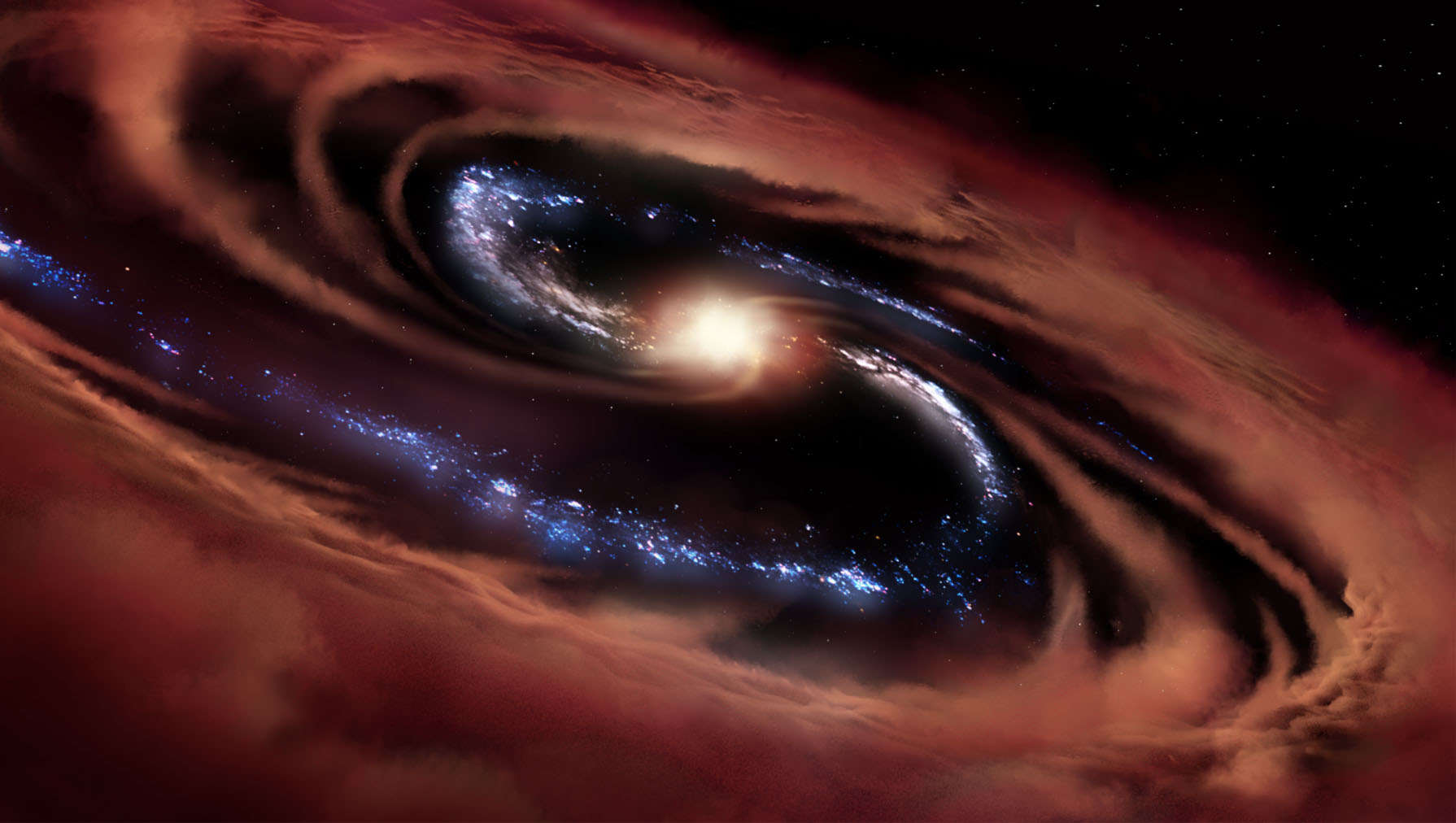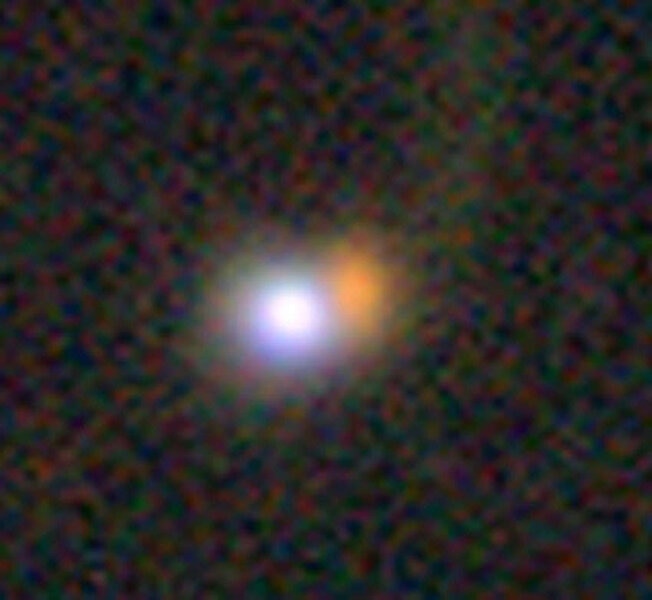Create a free profile to get unlimited access to exclusive videos, sweepstakes, and more!
This galaxy is spawning stars too fast for its monster black hole to eat them

There is nothing black holes love more than star stuff, but one galaxy is spawning stars faster than the supermassive black hole lurking at its core can eat them.
When black holes are feasting on stars, they turn into quasars that glow brighter than anything in the universe. Dust and gas from stars are pulled into a black hole’s accretion disc by its monstrous gravity and begin the slow spiral towards its event horizon. Past that point of no return, anything devoured by the black hole supposedly vanishes forever. Now scientists have discovered CQ 4479, a galaxy birthing so many stars, so fast, that the supermassive black hole at its center can’t engulf the energy from them fast enough.
CQ 4479 was found by NASA’s SOFIA (Stratospheric Observatory for Infrared Astronomy) infrared telescope. This galaxy is an anomaly because quasars indulging in a feeding frenzy usually heat up the rest of the galaxy to the point that atoms and molecules are flying around everywhere and nothing can settle long enough to condense into an astral embryo. This is why its black hole is called a “cold quasar.”
“Cold quasars are weird because they still host star-formation at the same time, and to confirm that stars were still forming, we needed far-infrared data from SOFIA,” Kevin Cooke, who led a study recently published in The Astrophysical Journal, told SYFY WIRE. “The detection of CQ4479 in the SOFIA far-infrared observations gave us the confirmation we needed to say that this was a cold quasar.”
Such a bizarre quasar proves that active black holes gorging themselves and growing does not instantly extinguish star birth. Cold quasar candidates seen by SOFIA were identified after being observed in both X-ray and optical light for the Stripe82X survey, which is a part of the Sloan Digital Sky Survey (SDSS). Cooke and his team believe they have caught CQ 4479, which is 5.25 billion light-years away, in a freeze frame of its last burst of star formation before all the heat from its black hole-turned-quasar took over. Sometime around 5 billion years ago, it ate enough steller innards to give it the amount of energy needed to heat up the galaxy enough for star formation to cease.
It gets weirder. Not only did the team identify a cold quasar in action, but varying methods of observation — which included FURV-FIR photometry and optical spectroscopy — that used different types of light yielded conflicting signatures of the energy being generated by the black hole. This almost never happens.
“If we used the X-ray emission that originates closer to the black hole, we found a lower growth rate number than if we used a specific kind of light in the optical that is farther out from the black hole,” Cooke said. “We believe these conflicting results point towards a process where the black hole was feeding even more rapidly in the past.”
Because the quasar in CQ 4479 is so bright, the galaxy itself is difficult to make out. It happens when you’re dealing with the most luminous objects out there. Images make it appear like a huge blob with a smaller blob beneath it, almost like a cosmic amoeba splitting. Galaxies whose black holes are feasting on energy are believed to be the aftermath of galactic mergers. When one galaxy crashes into another, the gas that orbits throughout those galaxies will never be the same. The immense shock of the collision sends all that gas straight to the gaping maw of the supermassive black hole.
NASA’s upcoming James Webb Space Telescope (JWST), which miraculously hasn’t experienced another delay yet, will beam back more hi-res images than the SOFIA and SDSS images that have told us Earthlings pretty much all we know about CQ 4479. JWST is highly sensitive in the high-infrared, which means it will get a much better look at some of the oldest objects in space without excess light obscuring them. ALMA will observe this galaxy in the radio to see cold hydrogen. Keeping the galactic disaster zone in mind has given Cooke an idea of what CQ 4479 might actually look like in the absence of all that extra light.
“I would expect us to see a galaxy that has highly disturbed spiral arms, if it even still has spiral arm structure anymore,” he said. “Observing cold hydrogen would teach us about the gas supply that remains in the galaxy. It's a very exciting observation to hope for since we don't know what exactly we'll see!"



























